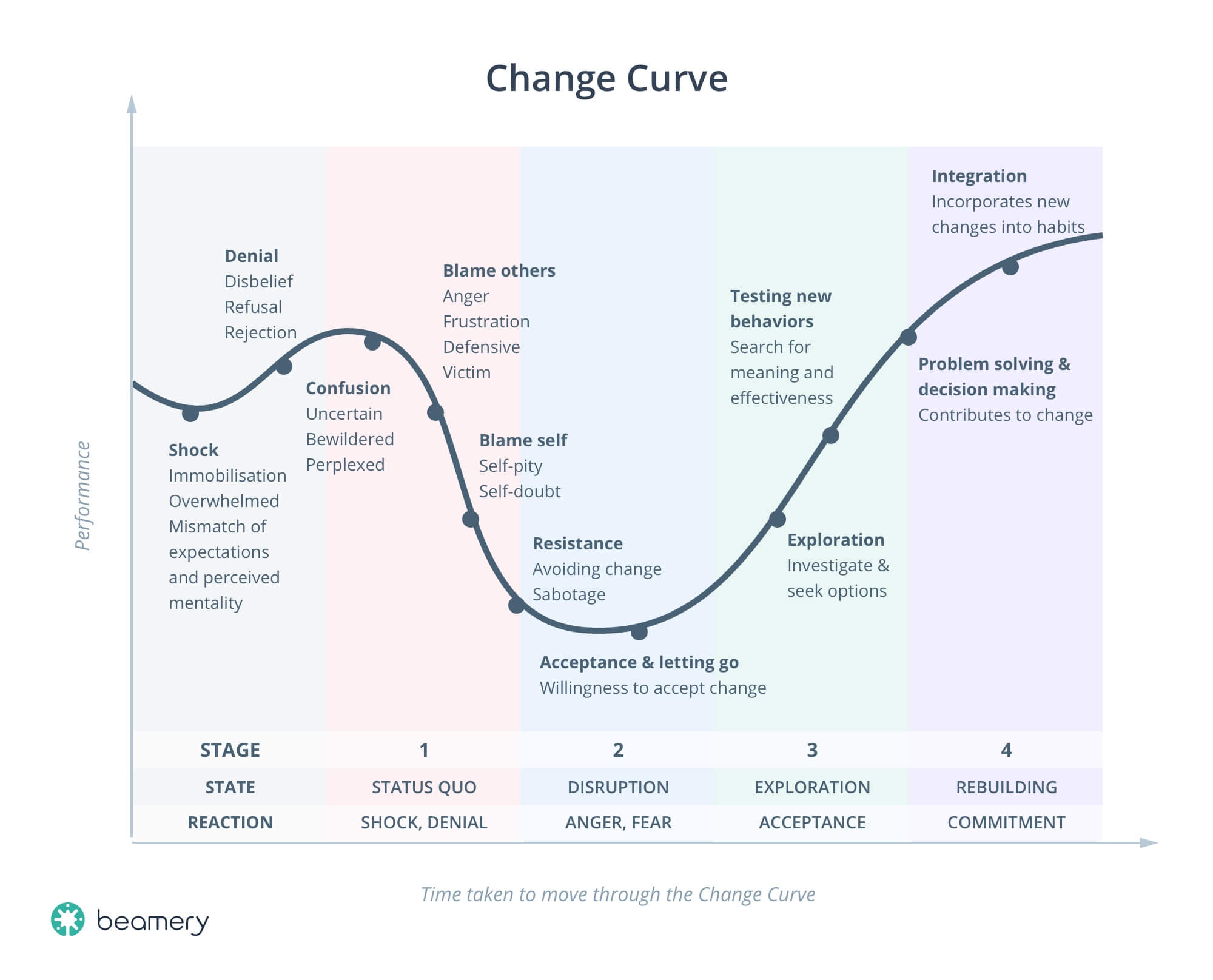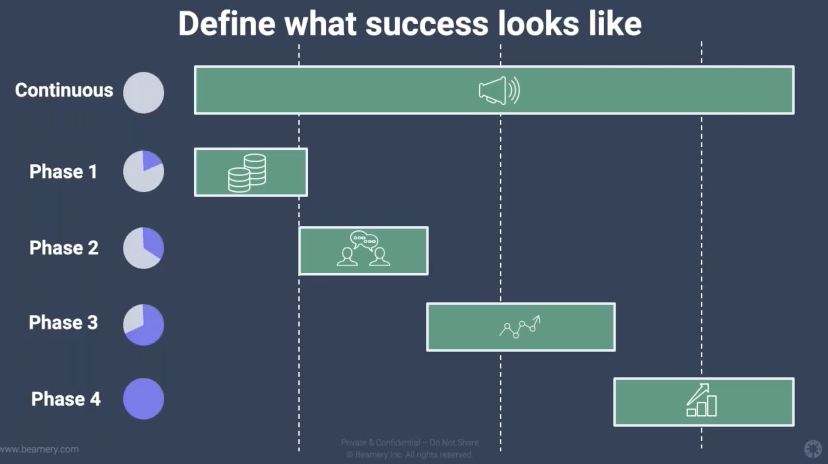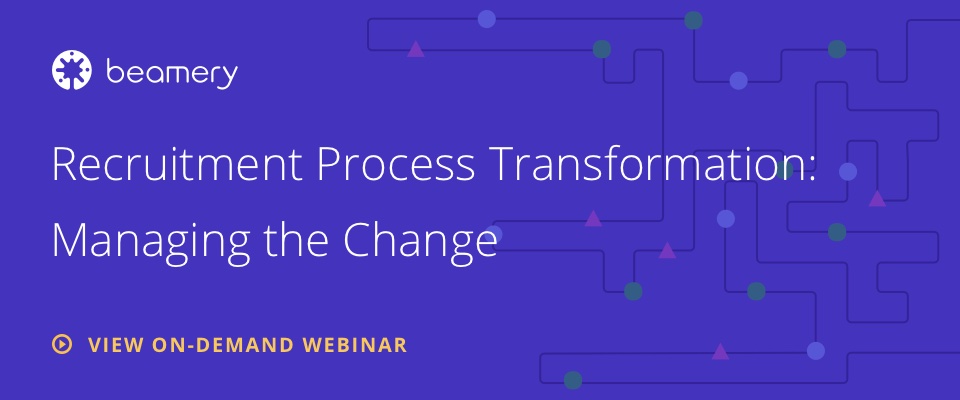Recruitment Process Transformation: Managing Change

A lot of brilliant recruiting strategies break because we’re not managing change around them right.
When bringing in a new recruiting process to the talent team, people focus on what the change is: what new tools are we using? How will the process be different? Most of the time, they do not focus as much on how to make the change stick.
Change management as a discipline looks into exactly that. More and more companies are fundamentally shifting their approach to TA to become more focused on talent engagement, which means that they have to manage the change around that transformation even more carefully.
A lot of the time, this means moving teams around and training them for new skills. We’ve seen many enterprise TA teams become more specialized, or adopt project-based team structures or even implement agile recruiting methodologies. We have seen them develop their relationship management, branding, marketing, operations and analytical skills.
These changes come with new processes, new organizational structures and reporting lines, new information flow paths, new decision rights, and very often, new technology platforms to support all of these changes. Al of which are opportunities for things to go south.
The Human Bias
We’re naturally uncomfortable with the general unknowns of change, and even more so when we have a good reason to be worried about our ability to do our jobs well.
In the case of a new recruitment marketing solution, recruiters have to get used to a new tool, yes, but also learn a new way of doing their job, which could result in a loss of performance or expertise in which they took pride before the change.
The “Change Curve” below does a good job of summarizing how change usually goes in an organization.

This applies to recruiting as well. As a recruitment manager faced with a new tool, you might have to relearn how to gage the efficiency of your recruiters, for example, because they might become familiar with the tool more quickly than you do. You might turn around to your TA leader and say that the platform does not allow reporting visibility, instead of saying that you don’t know yet how best to find the right reporting information using it.
The human element of change is the trickiest to predict and plan for, but it is crucial to pay attention to it. Aside from that, however, there are a few other possible reasons for why a new recruiting process or platform might fail.
Bad Implementation
Sometimes, the TA leaders and champions of the new process do not invest enough in planning for implementation. They put a few trainings on the calendar for the team and consider it done, which is a shame, since implementation is probably the easiest to plan for in advance, especially if you have a vendor to support you. It’s in their best interest to ensure adoption within your team, so take advantage of that support.
By giving a clear timeline, milestones, and smart goals to every step of the implementation, the TA team gives itself every chance of success. Again, it’s not just about training users and moving data around. It’s more about deciding what changes will happen first, and how to measure step-change success.

For example, start with a low hanging fruit, like reducing agency spend in the first three months of your new process. Once that is achieved, then move on to a more complex goal, like establishing a new collaboration process between recruiters, and successfully deploying it to make 10 hires. Treat implementation as a way to get to an ideal end state bit by bit, chunk by chunk, instead of expecting everyone to be working towards all the goals in parallel over the whole year.
Platform or Process Integration
Integrations are not only about how well your new technology or process work with your existing stack. It’s also about how well it meshes with the day-to-day activities of the TA team. Therefore, integrations are not a conversation to have exclusively with the operations specialists and technical managers; it also needs to be communicated with end users and with stakeholders outside of the TA organization.
Think about the two ways a new process can be looked at: On one hand, it can be perceived as just another admin task on the list, a new tool to log into every day or every week or a new brief to put together. Not very appealing for your team, and not really interesting for everyone else.
On the other hand, if this new process is either tacking itself onto existing meetings or briefings, or even removing the need for some of them, then it’s only good news. A tool that plays nice with the rest of your stack also means better visibility, a more holistic approach to talent acquisition, and value creation for the whole company.
Communication
This ties back to the human element as well. How can you get buy-in and convince people to adopt a new way of life if they are not informed about it?
It does go a bit further than that, though. It ties back to how the change is framed and perceived by the whole organization, and that is driven by how your team talks about it, and what information it shares.
Instead of talking about the steps of the process, talk about why it matters to you, to the team, to the company, and to the candidates. Share examples of how the candidate journey will change for the better because of the new process. Communicate those early milestones and wins that you designed in the implementation planning. Make the change about the ideal end state for every stakeholder, not just for you.
And by every stakeholder, we mean, people outside of the TA organization as well. Explain early to the marketing department what will be different with this transformation, and they will be in a position to help you set up a new process for employer branding campaigns, for example. If you wait until you need them to bring them in, they will be unable - and probably not really motivated either- to act quickly and give you valuable support.
Managing change in recruitment is inevitable for teams that are determined to stay relevant and competitive. If you want to learn more above how to successfully steer the transformation of your TA team or process, take a look at our recent webinar on the subject.
